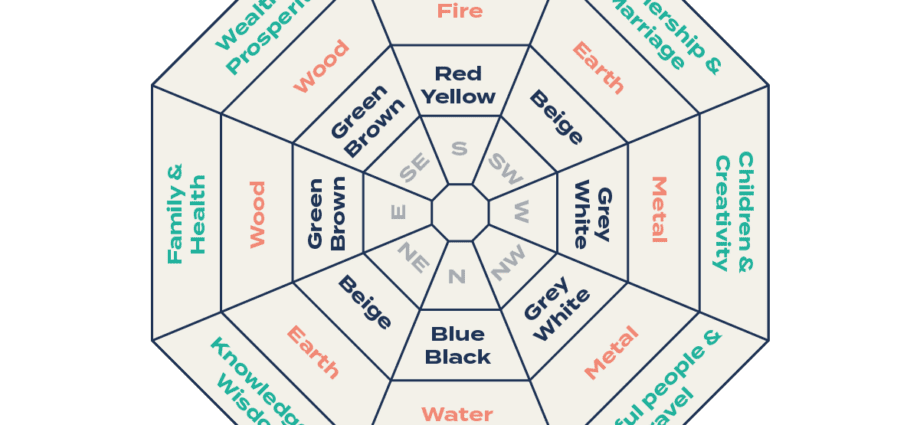Contents
The principles of feng shui
The idea of feng shui: to create optimal conditions of health, well-being and happiness by playing on the various components of an environment, such as the arrangement of furniture or the color of the walls.
Its practice is based on a basic principle: the free circulation of Qi (or Chi), a vital energy that must be able to move smoothly in your interior to be positive. It is also based on the theory of yin and yang, two contradictory forces whose balance determines the quality of Qi.
The Chinese still refer today to feng shui, literally “wind and water”, to design their cities and build their houses, especially sheltered from the wind (“feng”, which disperses Qi) and fresh water (“shui”, which concentrates it).
Feng shui or the art of arranging your home
First step: cleaning. Dusting, washing, degreasing and above all ventilating allows you to renew the energy of your home. It is then necessary to tidy up because the disorder causes the Qi to stagnate.
For a feng shui interior, prefer furniture with rounded shapes, synonymous with well-being and comfort. Get rid of the superfluous. The ideal: rooms that are neither too stripped down nor too busy.
In the living room, never have armchairs and sofas with your back to the door so as not to obstruct the flow of Qi. Likewise in the bedroom, the bed is never placed between the door and the window, but as far as possible from these two exits. In the kitchen, hang as many utensils as possible and make sure your worktops are clear. The bathroom and the toilet are considered to be places where good energies escape. It is therefore necessary to keep their door always closed and the toilet lid down. In the nursery, the headboard should be leaning against a wall so that the child feels safe.
For a harmonious result, consider balancing the different materials (furniture and accessories in wood or metal, rather yang, next to curtains, cushions or rugs, rather yin), as well as the shapes, for example by putting a square object on a round table.
Feng shui: the effects of color
According to the colors, the light varies changing the flow of Qi, which affects our way of perceiving things. The more vivid a color, the more yang it will be and will energize the energy around you. Warm and bright colors such as red, orange and yellow should therefore be reserved for very frequented and convivial rooms such as the kitchen and the dining room.
In contrast, soft and pale colors are associated with yin and serenity. So prefer light blue, green, pink and beige for the bedroom or living room.
Lighting is also important. Qi stagnates in a dark and taciturn environment. So make sure that each room is properly lit to positively influence your morale. And always favor the light most similar to that of day.
Feng shui in the office
The principles of feng shui applied in your workplace can help you remedy the stress factor and improve your performance.
Start by removing the obstacles that block access to your office and make you feel like a constant fight every time you join it. Regarding the layout of your workspace, avoid your seat being placed back to the door or window so as not to feel vulnerable and anxious.
If the room is cramped, use a mirror to enlarge the space and help the energy flow.
The protruding angles of the rectangular desks create aggressive arrows. Hide them with a plant, lamp or decorative accessory.
To avoid clutter, organize, store, label and replace post-it notes with a notepad or notebook, much more practical.
Feng shui on the plate
Feng shui concerns the energies that surround us, but also those that constitute us. It is therefore also practiced on the plate by choosing food according to its personality to harmonize the yin and yang energies.
If you are patient, discreet, calm, greedy and plump, your temperament is yin. Eat yang instead: red meat, fatty fish, eggs, tea, coffee, brown rice, dark chocolate or even dried fruits.
Willful, impulsive, dynamic, slim and muscular, you are yang. Eat yin ingredients like sugar, honey, milk, white bread, grains, potatoes, as well as fruits and vegetables that contain a lot of water.
Finally, know that cooking in the microwave is to be avoided: the rays of the device cancel out the energies of the food.










